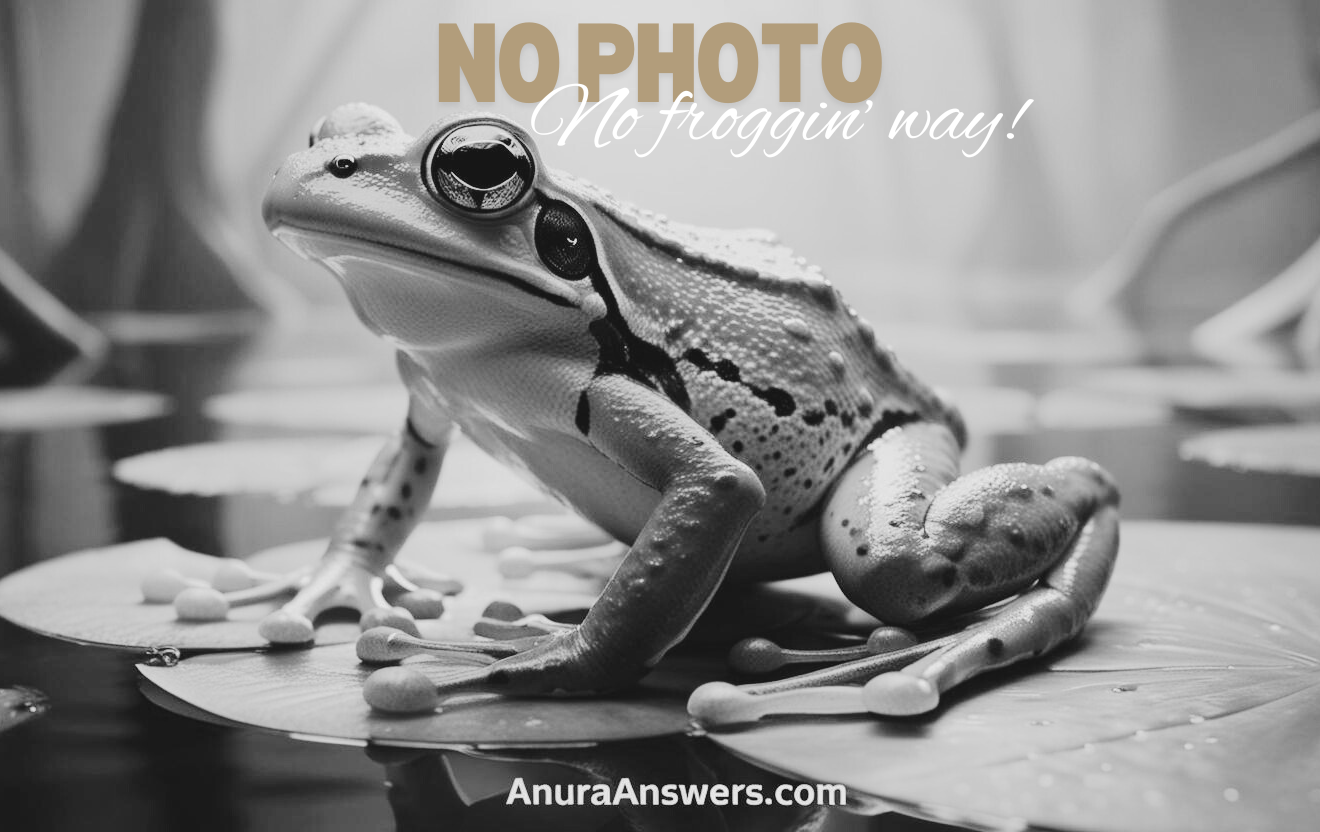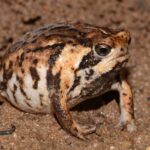- Altiphrynoides osgoodi: The Secretive Ethiopian Amphibian Facing a Fragile Future
- Taxonomy and Classification: Defining an Amphibious Identity
- Natural Habitat: A Life Shaped by Mist and Mountains
- Physical Characteristics: Compact Beauty Crafted by Nature
- Behavior and Life Cycle: Quiet Perseverance Amid the Mist
- Ecological Role: Small Amphibian, Big Impact
- Threats and Conservation Status: Guardians of a Fragile Future
- Cultural and Scientific Significance: More Than Just a Frog
- Conclusion: Celebrating and Protecting Ethiopia's Amphibian Gem
Altiphrynoides osgoodi: The Secretive Ethiopian Amphibian Facing a Fragile Future#
In the damp cloud forests blanketing Ethiopia’s rugged mountain terrains, an extraordinary creature survives, hidden beneath layers of moss-covered logs and nestled among dense leaves shimmering with moisture. The Ethiopian highlands, often celebrated for their dramatic mountain vistas and vibrant endemic wildlife, conceal an unobtrusive yet astonishing amphibian—the elusive Altiphrynoides osgoodi. Known formally by its scientific name, this diminutive creature harbors secrets of survival, resilience, and the delicate ecological balance upon which it hugely depends.
The common name “Osgood’s Ethiopian Toad” may rarely enter everyday discussions, but this small frog’s existence serves as a compelling testament to nature’s beauty and vulnerability. As we journey into its spectacular habitat, explore its intriguing behaviors, and navigate challenges threatening its future, you’ll soon appreciate just why Altiphrynoides osgoodi warrants admiration—and protection.
Taxonomy and Classification: Defining an Amphibious Identity#
Before truly understanding the quiet mystery that is Altiphrynoides osgoodi, let us begin by defining its place on the elaborate tree of life. Classified within the Bufonidae family—commonly known as true toads—Altiphrynoides osgoodi belongs to the genus Altiphrynoides, a relatively small and geographically restricted group known primarily from Ethiopia’s mountainous regions.
Initially described scientifically by biologist Gladwyn Kingsley Noble in 1932, this fascinating amphibian was fondly named “osgoodi” in honor of esteemed zoologist and curator Wilfred Hudson Osgood. With its limited range and distinct evolutionary lineage, Altiphrynoides osgoodi shares close lineage ties with its sister species, Altiphrynoides malcolmi, an equally elusive amphibian inhabiting similar high-altitude environments. Together, these species underscore Ethiopia’s unique biodiversity and evolutionary significance.
Natural Habitat: A Life Shaped by Mist and Mountains#
The Ethiopian highlands—a land of peaks veiled by whispering mist and valleys cradling lush, humid forests—provide Altiphrynoides osgoodi with a precisely crafted habitat. Here, nestled at altitudes ranging typically between 2,300 and 3,500 meters above sea level, this specialized frog thrives amid montane grasslands, damp evergreen forests, and pristine Afro-alpine ecosystems.
An Ecosystem Sculpted for Survival#
Prone to frequent rainfall, enveloping fog, and consistent humidity, these habitats offer Altiphrynoides osgoodi numerous vital microhabitats. Decaying logs carpeted in moss, rock crevices moisture-laden and sheltering, and leaf litter rich in insects compose the delicate mosaic where this species dwells. Exceptional dependence on moisture has intricately tied its very existence to these specialized high-altitude environments.
Beneath dense forest canopies, moisture trickles, forming small springs and rivulets, inducing a watery paradise where this amphibian population clusters. Their preference for such fragile, cloud-wrapped surroundings emphasizes how profoundly climatic conditions shape species distributions and ecological niches.
Physical Characteristics: Compact Beauty Crafted by Nature#
At first glance, Altiphrynoides osgoodi might be easily overlooked, yet observing closely reveals surprising beauty and evolutionary adaptation. Averaging only about 20 to 30 millimeters in length, this toad ranks among Ethiopia’s smallest amphibians, its compact size perfectly suited to navigating its intricate forest-floor habitat.
The coloration of Altiphrynoides osgoodi adeptly mirrors its forest floor home—a palette subtly blending shades of earthy brown, mossy green, and muted yellows. Darker blotches and flecks adorn its rough, slightly granular skin, serving as camouflage against predators such as birds and snakes.
Moreover, distinct physical adaptations facilitate life within their mist-veiled refuge. Robust limbs ending in small yet strong toes enable confident traversal across slippery rock surfaces and damp wood. Sensory organs, finely tuned to detect even subtle environmental shifts and threats, prove vital for survival in landscapes where visibility often remains compromised by continuous clouds.
Behavior and Life Cycle: Quiet Perseverance Amid the Mist#
Despite its discreet nature, Altiphrynoides osgoodi exhibits fascinating behaviors that illuminate remarkable evolutionary strategies. Foraging primarily during twilight’s gentle glow and under the veil of darkness, this secretive amphibian patiently hunts insects, spiders, and other small invertebrates. Utilizing an ambush predation strategy, it conserves precious energy, awaiting unsuspecting prey to pass nearby before swiftly extending its tongue—a precise yet subtle predator.
Unique Breeding Behavior: Direct Development Wonders#
Unlike many amphibians, Altiphrynoides osgoodi doesn’t engage in traditional aquatic breeding—there is no loud, mesmerizing collective chorus near ponds or streams. Instead, this species possesses the remarkable ability known as direct development. Eggs laid in moist but terrestrial microhabitats, sheltered beneath damp leaves or moss-covered logs, bypass the typical aquatic tadpole stage entirely.
Eggs hatch directly into miniature, fully-developed froglets—tiny versions of their parents, capable of immediate independence. This adaptation profoundly benefits survival, removing vulnerability to predation and desiccation in habitats characterized by variable aquatic resources and challenging climatic fluctuations.
The froglets’ independence from water bodies confers substantial survival advantages and reduces competition within their fragile habitats. Thus, this reproductive strategy symbolizes evolutionary resilience against environmental extremes.
Ecological Role: Small Amphibian, Big Impact#
Every organism contributes uniquely to the ecosystem in a delicate ecological dance woven by millions of tiny threads. Altiphrynoides osgoodi is no exception. Predating on numerous small invertebrates, this diminutive predator significantly regulates insect populations, contributing to sustaining healthy, balanced forest ecosystems.
Simultaneously, Altiphrynoides osgoodi conditions soil health indirectly through its dietary habits, enhancing nutrient cycling within Ethiopian montane habitats. As prey, it sustains local predatory species, including reptiles, birds, and small mammals, maintaining ecological connections essential for a thriving biodiversity network.
Threats and Conservation Status: Guardians of a Fragile Future#
Despite evolutionary resilience, Altiphrynoides osgoodi faces numerous challenges that threaten its continued existence. The International Union for Conservation of Nature (IUCN) categorizes this species as Endangered, with populations declining alarmingly in recent decades. Primary threats include intensive habitat fragmentation, agriculture expansion, deforestation, climate change, and emerging amphibian diseases like chytridiomycosis.
Climate Change and Habitat Loss: A Deadly Combination#
Mist-enshrouded cloud forests inhabit extremely narrow climatic envelopes sensitive to even slight temperature changes and moisture availability. As global climate shifts reshape environmental conditions, Altiphrynoides osgoodi faces devastating habitat shrinkage due to decreasing humidity and changing rainfall patterns, exacerbating an already challenging existence.
Additionally, expanding agriculture, firewood harvesting, charcoal production, and deforestation directly compromise this amphibian’s survival by removing critical habitats crucially needed for shelter, moisture, and reproduction. Immediate, concerted conservation actions become paramount.
Cultural and Scientific Significance: More Than Just a Frog#
Though perhaps less charismatic than Ethiopia’s better-known mammals, the unique ecological roles, specialized adaptations, and evolutionary importance of Altiphrynoides osgoodi signify profound scientific value. Highlighting broader ecological health, this humble amphibian signals environmental changes, showcasing the urgent, intertwined relationship between biodiversity and human activity.
Culturally, local Ethiopian communities have historically appreciated surrounding forests, often indirectly benefiting amphibian conservation by maintaining traditional forest stewardship practices—a mutualism unfortunately challenged in modern economies growingly disconnected from ecological knowledge.
Conclusion: Celebrating and Protecting Ethiopia’s Amphibian Gem#
Ultimately, Altiphrynoides osgoodi is more than simply a small frog hidden within the misty Ethiopian forests. It’s a testament to remarkable adaptation, intricate ecological connectivity, and the broader environmental challenges facing our planet. Ensuring the survival of Altiphrynoides osgoodi requires appreciating its ecological worth, understanding its threats, and supporting active, responsible conservation endeavors.
Safeguarding the beautiful complexity of life relies upon our commitment to preserving species like Altiphrynoides osgoodi. We invite you to continue exploring, advocating, supporting conservation initiatives, and joining efforts safeguarding remarkable ecosystems—protecting not just one amphibian, but countless interconnected lives illuminating our beautifully intricate world.







